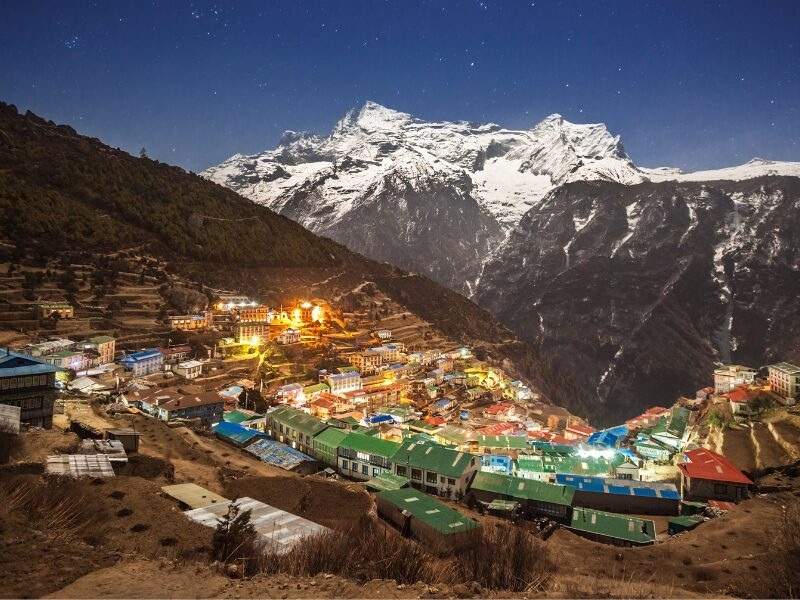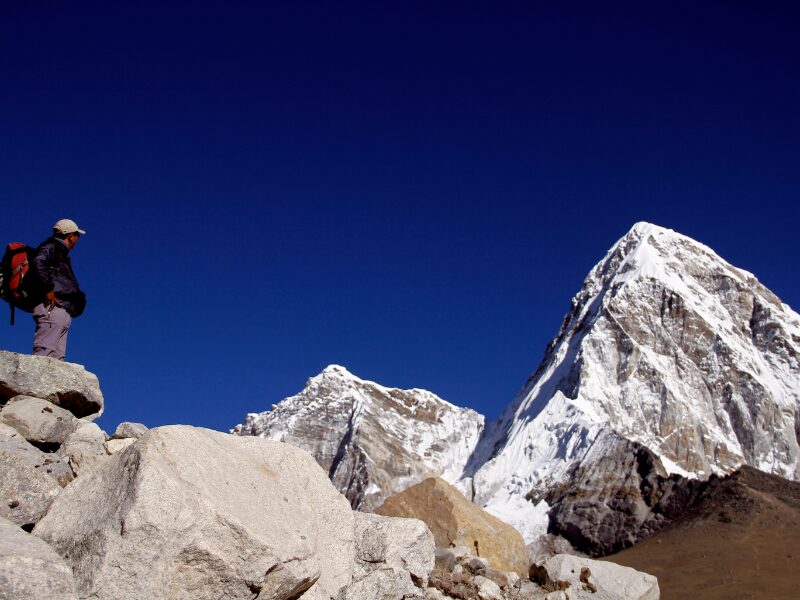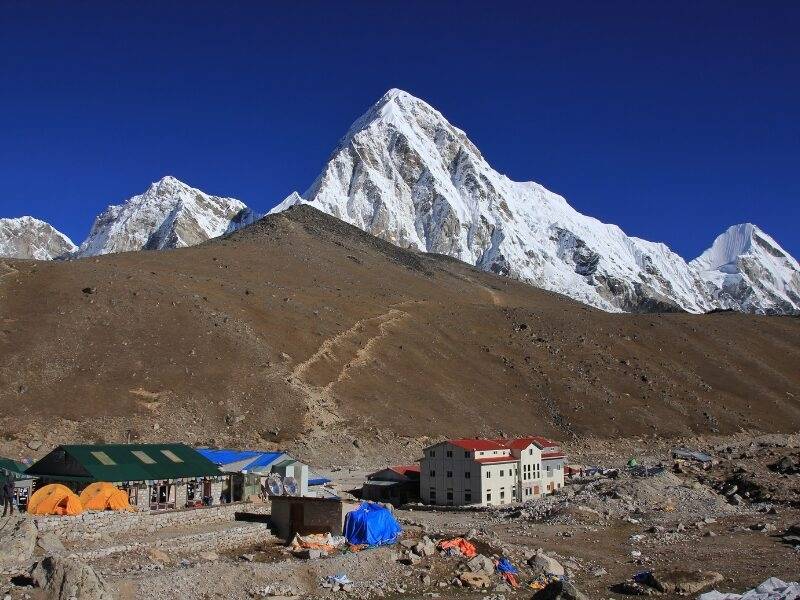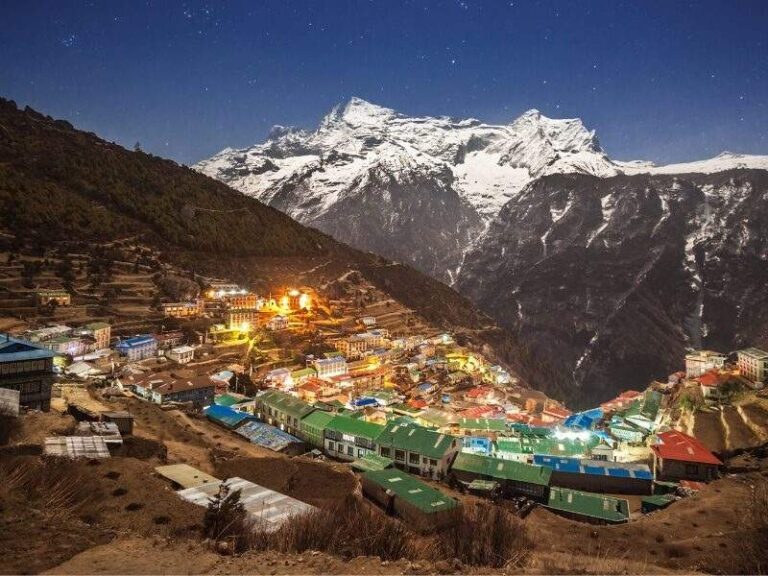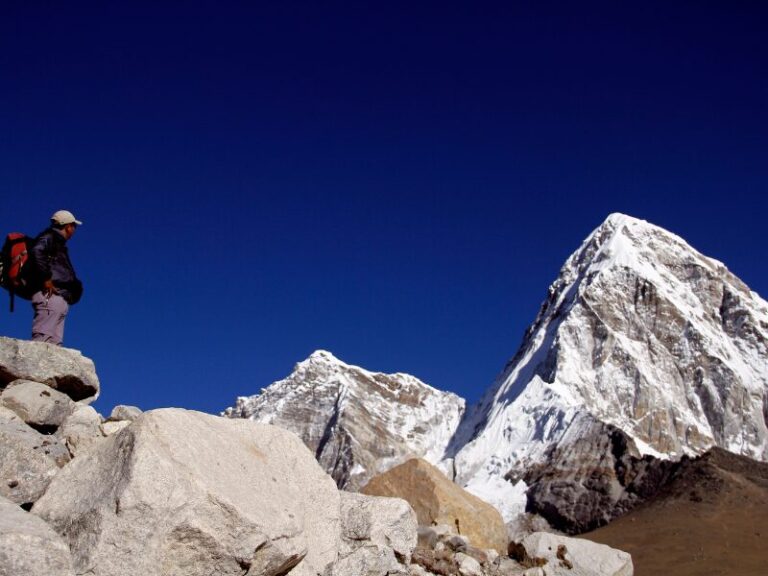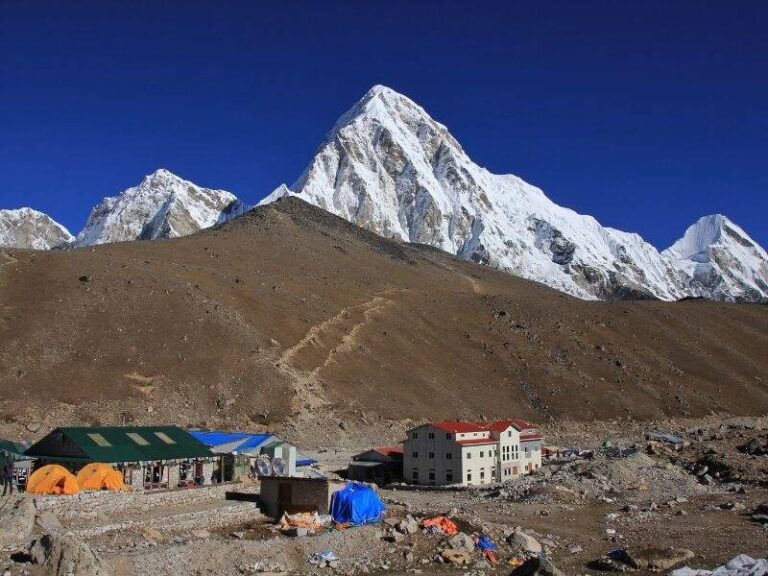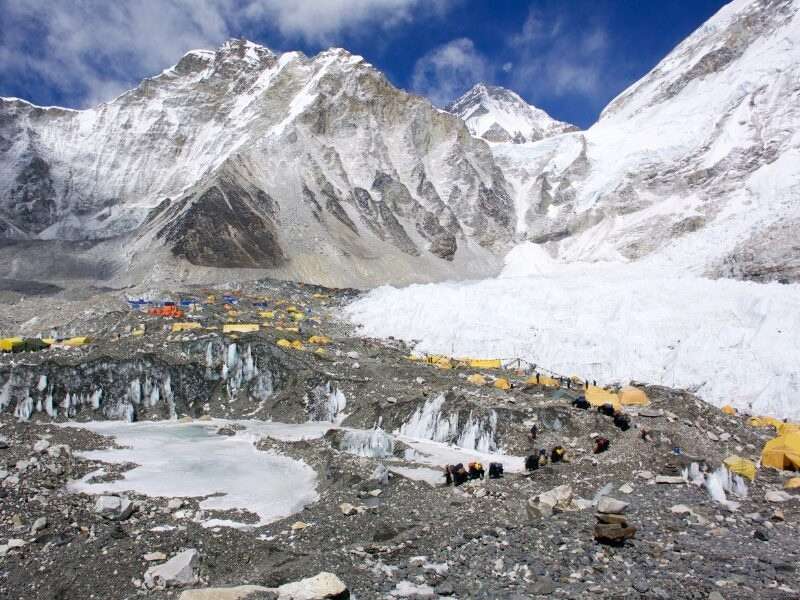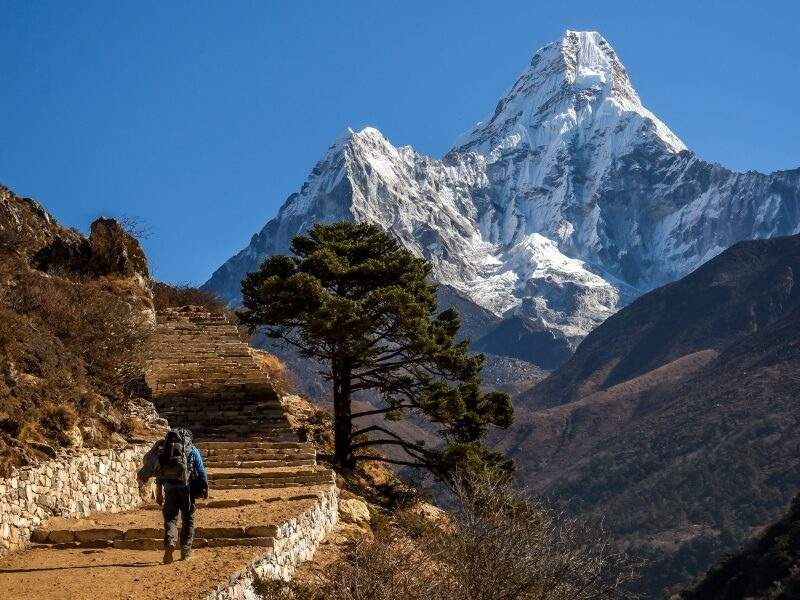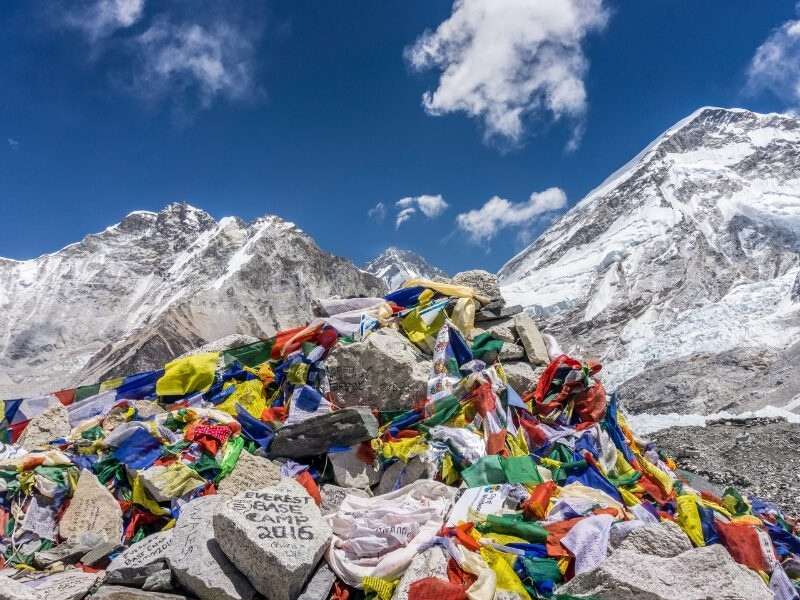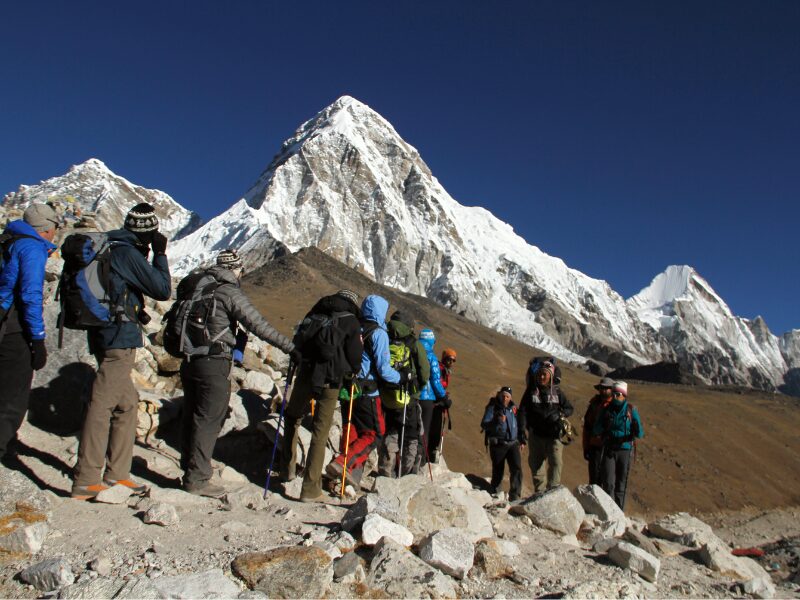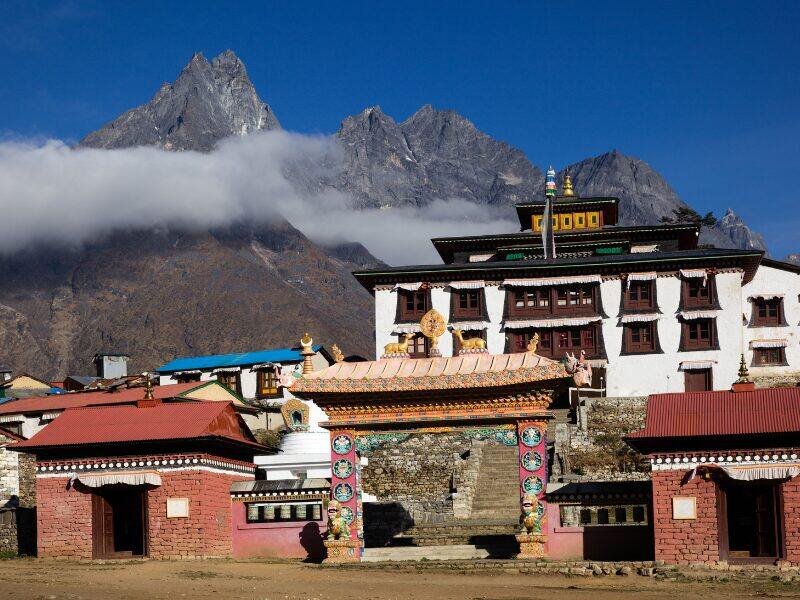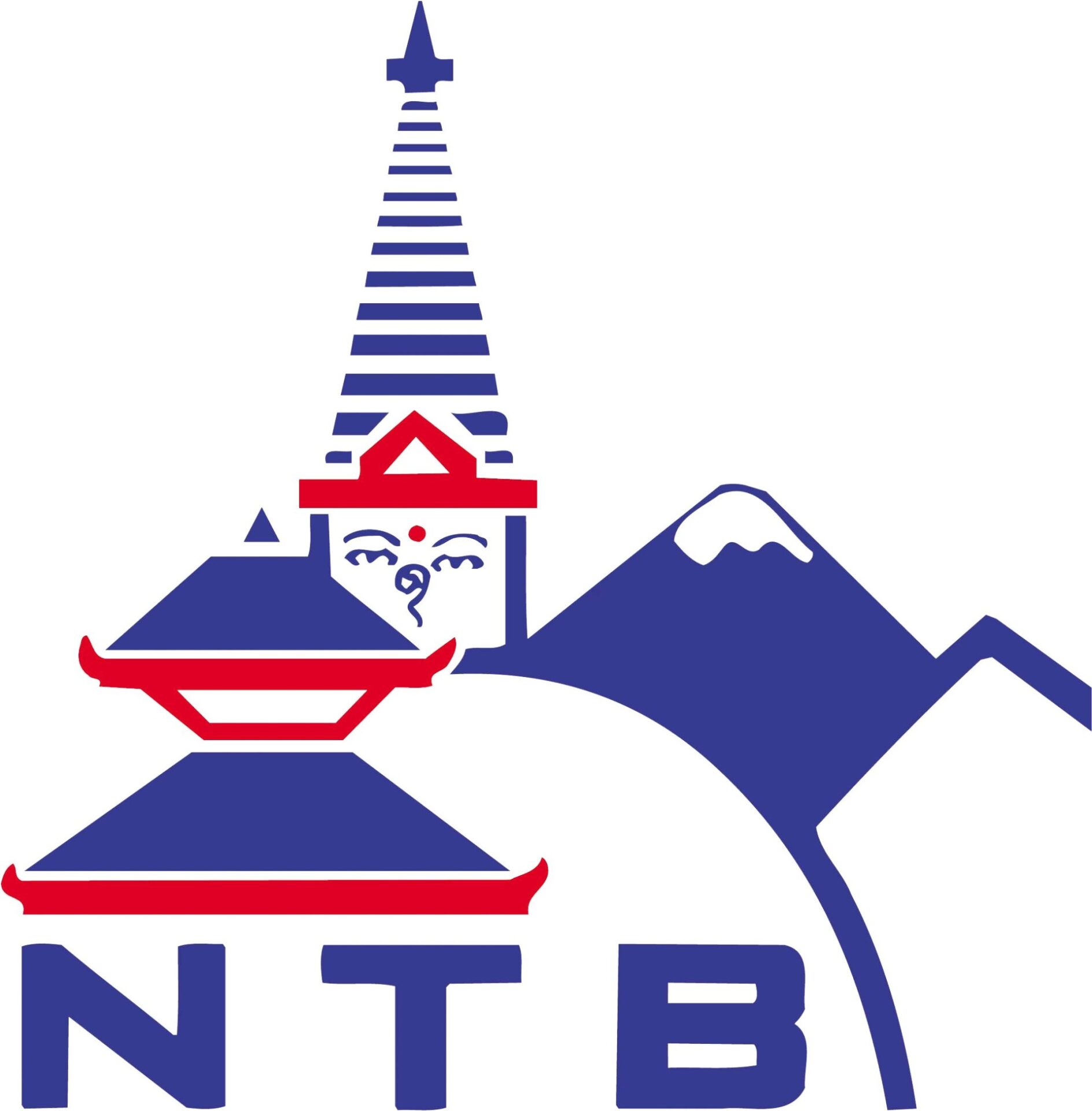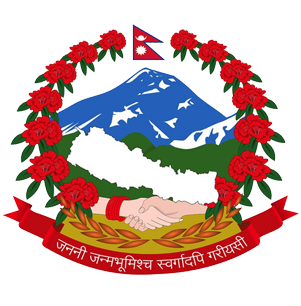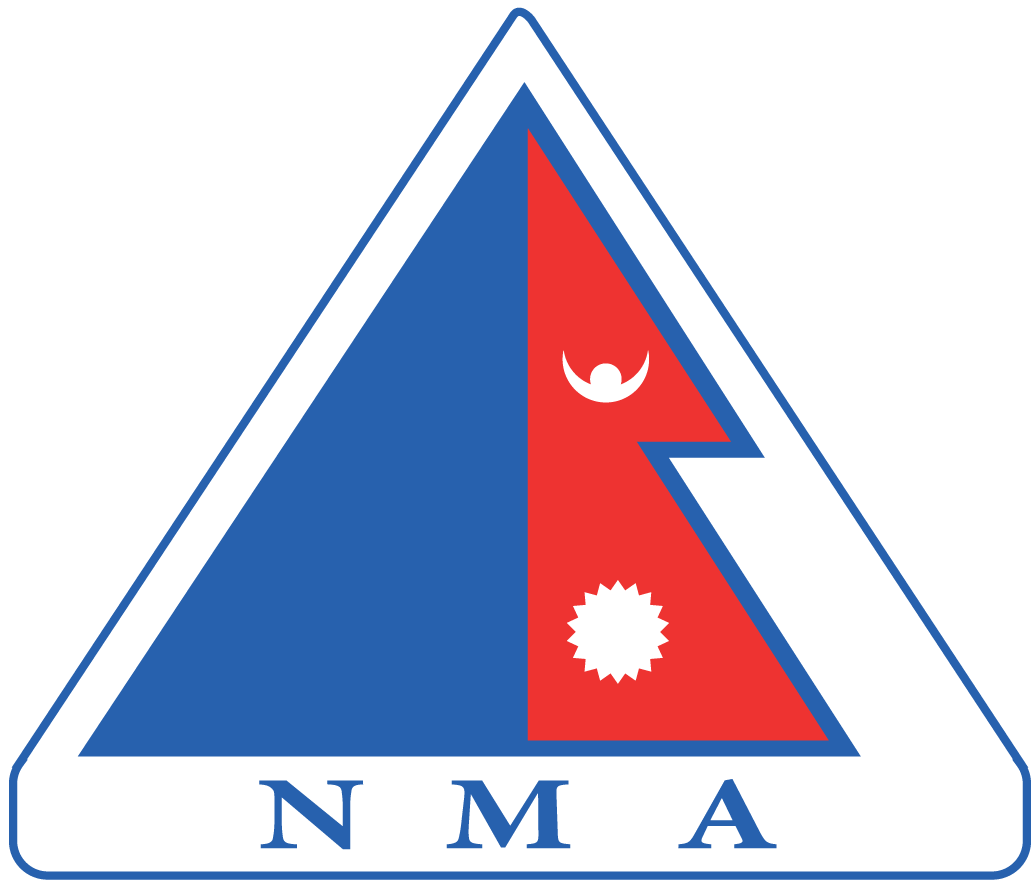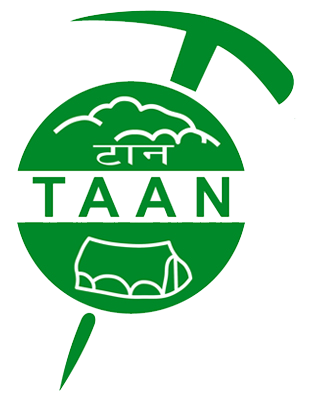Everest Base Camp Trek
Ultimate Everest Base Camp Trek Adventure!!
The Everest Base Camp Trek is a breathtaking adventure that takes trekkers through the heart of the Khumbu region in Nepal, offering spectacular views of the world’s highest peak, Mount Everest. The trail passes through charming Sherpa villages, dense rhododendron forests, and high-altitude landscapes.
Trekkers pass iconic landmarks such as Namche Bazaar, Tengboche Monastery, and Gorak Shep before reaching Everest Base Camp at an elevation of 5364 m. The journey is not only a physical challenge but also a cultural immersion, allowing participants to experience the rich Sherpa hospitality and witness the unique blend of Tibetan Buddhism along the way.
The Everest Base Camp Trek is a challenging yet rewarding adventure, providing an opportunity to witness the awe-inspiring vistas of Everest, Lhotse, Nuptse, and other towering peaks.
Trip Overview
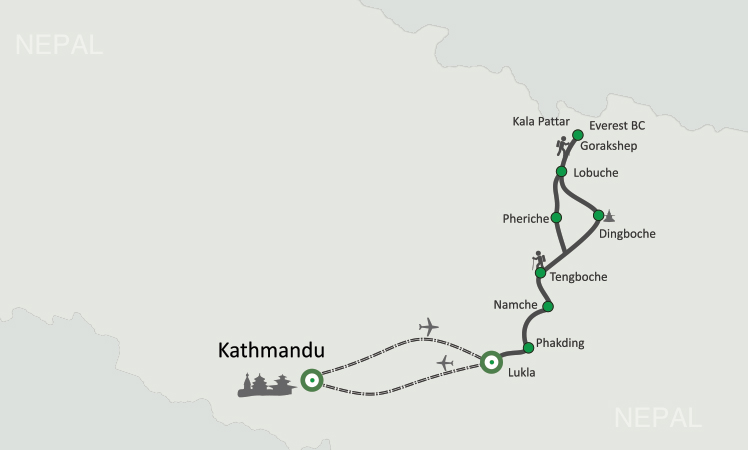
 Start: Kathmandu
Start: Kathmandu  End: Kathmandu
End: Kathmandu Outline Itinerary
Kathmandu (Arrival) – Transfer to Hotel (Private Transfer)
Kathmandu (1400m)Kathmandu – Lukla (Fly – Flight Transfer) – Phakding
Lukla (2860m; 30 mins- fly) Phakding (2610m; 3 hrs)Phakding – Namche
Namche (3440m; 6 hrs)Acclimatization Day in Namche Bazar
Namche Bazar (3440m)Namche – Tengboche
Tengboche (3860m; 6 hrs)Tengboche - Dingboche
Dingboche (4410m; 6 hrs)Acclimatization Day in Dingboche
Dingboche (4410m)Dingboche - Lobuche
Lobuche (4910m; 5 hrs)Lobuche – Gorakshep (Afternoon hike to Kalapatthar)
Gorakshep (5164; 7 hrs) Kalapatthar (5555m)Gorakshep – Pheriche (Morning hike to Everest Base Camp
Pheriche (4240m; 7 hrs) EBC (5364m)Pheriche – Namche
Namche (3440m; 7 hrs)Namche – Lukla
Lukla (2840m; 6 hrs.)Lukla – Kathmandu (Fly – Flight Transfer)
Kathmandu (1400m; 30 mins - fly)Kathmandu (Departure)
Price Inclusion
- Airport transfers (Domestic/ International) on a tourist vehicle
- Domestic flight ticket (Kathmandu / Lukla / Kathmandu)
- Entire accommodation during the trek – 2 nights at hotel in Kathmandu, and 11 nights in lodges/guesthouse during trek to EBC
- Hotel Breakfast during the stay at Kathmandu
- Experienced, government licensed, English-speaking or another language trekking guide
- All necessary permits for Sagarmatha National Park and TIMS (Trekkers’ Information Management System)
- Porters during the trek for carrying luggage (1 porter for every 2 pax)
- All government taxes and administrative expenses
- Local staff insurances
Price Exclusion
- International flight tickets and Nepal Entry Visa
- Personal travel insurance
- Any expenses of a personnel nature, e.g., telephone calls, laundry, table drinks, etc.
- Any Tips to Guides, Drivers, and Trekking Staffs
- Any entrance fees for cameras and video cameras at the monuments
- Any other services not mentioned above
- Cost of any emergency evacuation, strikes, etc.
Detail Itinerary
Expand AllKathmandu (Arrival) – Transfer to Hotel (Private Transfer)
Upon arrival in Kathmandu, the capital city of Nepal, our representative will be waiting at the airport for your welcome. Then board a private vehicle and be transferred to your hotel. Check into your hotel and rest after your journey. There will be a briefing session about Everest Base Camp Trek.
Depending on your arrival time, you may have the opportunity to explore ancient temples and vibrant markets and experience the unique atmosphere of Nepalese urban life.
Kathmandu – Lukla (Fly – Flight Transfer) – Phakding
You will experience a short yet thrilling flight to Lukla in the early morning. You will see an incredible shift in scenery and the climate on your route, which is an excitement in itself. After landing at one of the world’s most dangerous airports, Tenzing Hillary Airport, you’ll start the journey to Phakding. Here you officially start on the Everest Base Camp Trek.
Phakding is a beautiful settlement along the Dudh Kosi River. You’ll come across prayer flags, mani walls, and little monasteries along the route, providing an insight into the region’s rich religious and cultural history.
Phakding – Namche
Today, your journey takes you to Namche Bazar, the gateway to the Everest region. The trail offers breathtaking views of the Himalayan peaks while passing through luxuriant rhododendron trees and several suspension bridges with glimpses of Everest and other surrounding peaks.
Namche is a thriving Sherpa town where you can buy regional goods and get to know the welcoming Sherpa people. When you get there, you can explore the Sherpa Culture Museum to discover more about the area’s rich cultural history.
Acclimatization Day in Namche Bazar
Today is your rest day. You can explore the Namche Bazar or hike to viewpoints around Namche to help your body adjust to the altitude and enjoy stunning panoramic views of Everest, Lhotse, and Ama Dablam. You can also spend the day exploring the town, visiting the Everest Photo Gallery, and interacting with local Sherpa residents.
Namche – Tengboche
The trail towards Tengboche is rocky, and the route descends in the early morning before ascending up to Tengboche. The path continues through charming villages, lush rhododendron forests, glaciers, rivers, and monasteries and offers more breathtaking mountain views of Mt. Everest, Ama Dablam, Lhotse, and Nuptse until you reach Tengboche.
Tengboche is famous for the Tengboche Monastery. It is a cultural and spiritual center in the region. You can observe Lamas performing prayer in the evening and enjoy the serene atmosphere.
Tengboche - Dingboche
Today, you will head towards Dingboche, where you will pass through alpine landscapes along the way with breathtaking views of the Himalayan peaks. The Imja Khola will be followed before you ascend to Dingboches.
Dingboche is a picturesque village surrounded by stone walls to protect crops from harsh winds. You will explore the local culture and enjoy the tranquility of this high-altitude settlement.
Acclimatization Day in Dingboche
Today will be your acclimatization day. You can rest, explore, or get to know the local culture and people in Dingboche. You can also go for a hike to viewpoints such as Nagarjun Hill to prepare for the higher altitudes or for stunning views of the surrounding peaks.
Dingboche - Lobuche
After resting a day in Dingboche, you’ll begin your trek to Lobuche with an easy climb in the path of the Pheriche Valley. The route offers magnificent views of the Khumbu valley, moraine and glaciers. You will see Mt. Ama Dablam, Mt. Nuptse, and Mt. Lhotse while walking.
As you reach Lobuche after passing through the Thokla Pass, the landscape becomes more rugged. Lobuche itself is a remote settlement with a unique beauty, nestled amidst jagged peaks and glacial moraines.
Lobuche – Gorakshep (Afternoon hike to Kalapatthar)
Today the path takes you to the last settlement before Everest Base Camp, Gorak Shep. To reach Gorakshep village, you will walk along the Khumbu glacier while enjoying the magnificent view of Mt. Nupstse.
As you soon reach Gorakshep Village, you will prepare to ascend Kala Patthar, the trek’s highest point at 5545 meters, after resting a few hours.
The afternoon hike to Kala Patthar gives breathtaking panoramic sunset views of Mt. Everest and the neighboring peaks. Kala Patthar is an excellent vantage point for the incredible view of Mt. Lhotse, Mt. Nuptse, Mt. Pumori, and Mt. Everest.
Gorakshep – Pheriche (Morning hike to Everest Base Camp
Your day will begin with a memorable yet challenging, rugged terrain morning climb to Everest Base Camp, where you’ll be able to experience the unique atmosphere at the base camp and marvel at the surrounding peaks. Take your time for the magnificent views of the Khumbu Glacier, Khumbu Icefall, Mt. Pumori, Mt. Nuptse, Mt. Khumbuste, and Mt. Everest.
Enjoy your time with the magnificent views at the base of the world’s highest mountain. After this memorable hike to EBC, you will descend to Pheriche so that you can visit the Himalayan Rescue Association and learn more about high-altitude health and safety.
You reach at the ultimate point of Everest Base Camp Trek.
Pheriche – Namche
After having breakfast, you descend back towards Namche on the same trail as we did earlier. You will cross the suspension bridge and enter the forest trail to reach Namche Bazar. After reaching Namche Bazar, take time to revisit the vibrant markets, enjoy local cuisine, and explore the monasteries and cultural sites you encountered earlier in your journey.
Namche – Lukla
Your memorable and adventurous Everest Base Camp Trek comes to an end as you make your way back to Lukla, leaving Namche. After having breakfast at Namche, you will walk to the same path as earlier. After reaching Lukla, get some time to relax and explore the village in your free time.
Lukla – Kathmandu (Fly – Flight Transfer)
After taking off from one of the world’s most dangerous airports, Tenzing Hillary Airport, you will experience a short yet thrilling flight from Lukla to Kathmandu in the early morning. You will see an incredible shift in scenery and the climate on your flight, which is an excitement in itself. The flight back to Kathmandu provides a bird’s-eye view of the Himalayas.
As you return to the bustling city of Kathmandu, you can explore some of the city’s cultural and historical areas.
Kathmandu (Departure)
Today is the last day of Everest Base Camp Trek package. Depending on your flight schedule, depart towards the airport. Before your fight schedule starts, you may have some free time in Kathmandu for last-minute shopping or sightseeing.
Why you'll love this trip
- Achieve the ultimate goal by reaching Everest Base Camp, standing at the foot of the world’s highest peak
- A thrilling flight to Lukla, considered one of the world’s most dangerous airports
- Explore and experience the vibrant Sherpa town and their culture and the warmth of Sherpa hospitality.
- Visit the ancient Tengboche Monastery, a spiritual center.
- Hike to Kala Patthar (5555m) for a sunrise or sunset panorama, offering unparalleled views of Everest, Nuptse, and Lhotse, creating an unforgettable moment.
- Take in the view of the expansive Khumbu Glacier and the treacherous Khumbu Icefall.
- Witness the beautiful flora and fauna of Sagarmatha National Park.
When To Visit
When it comes to trekking to Everest Base Camp, the best times to trek are in late March to early June for the spring season, or late September to early November for the autumn season. At these times of year, clear skies, comfortable temperatures, and stunning views of the Himalayas are all provided by reasonably stable weather. Autumn offers clear, dry air and great visibility, while spring brings bright rhododendron blooms. These windows minimize the risk of rainfall and provide optimal trekking conditions. The monsoon season, which runs from June to August, should be avoided because of the intense rains, and the winter season, which runs from December to February, can be very cold, with a chance of snow-covered trails and more flights being canceled to and from Lukla, the entry point to the Everest region.
Select a Departure Month
- February
- March

Cannot see your date or not satisfied with the itinerary? We may be able to add new trip dates.
Contact UsElevation Chart
Trip Gallery
FAQs for Everest Base Camp Trek
Is there mobile network and internet connectivity during the trek?
While some parts of the trail may have mobile network coverage, it’s sporadic. Teahouses usually offer Wi-Fi, but the connection can be slow and unreliable.
What kind of weather did the trekkers experience?
The weather can vary, but in general, it’s cold, especially at higher altitudes. Daytime temperatures can range from 10°C to 20°C (50°F to 68°F), while nighttime temperatures can drop below freezing.
How difficult is the Everest Base Camp trek?
The trek is considered challenging due to its high altitude, varied terrain, and unpredictable weather. Good physical fitness and acclimatization are crucial.
Do I need travel insurance for the Everest Base Camp trek?
Yes, travel insurance is highly recommended, covering medical expenses, emergency evacuations, and trip cancellations.
Do I need a permit for the Everest Base Camp trek?
Yes, you need two permits: the Sagarmatha National Park Entry Permit and the Khumbu Pasang Lhamu Rural Municipality Entry Permit.

